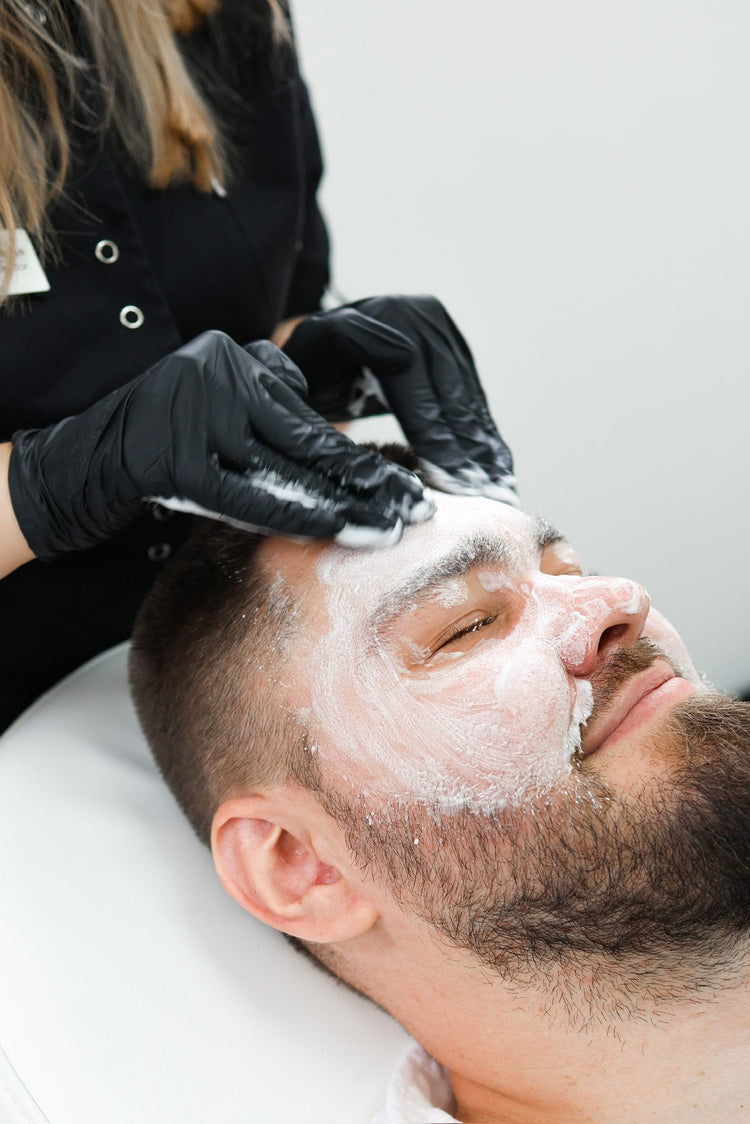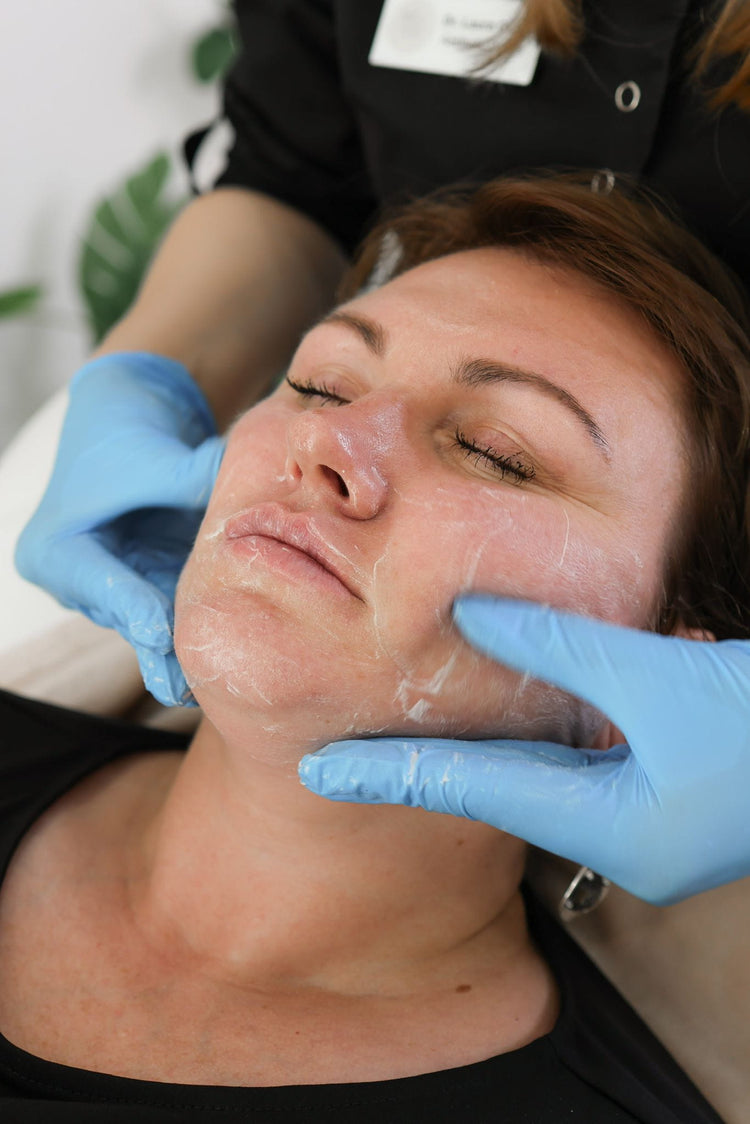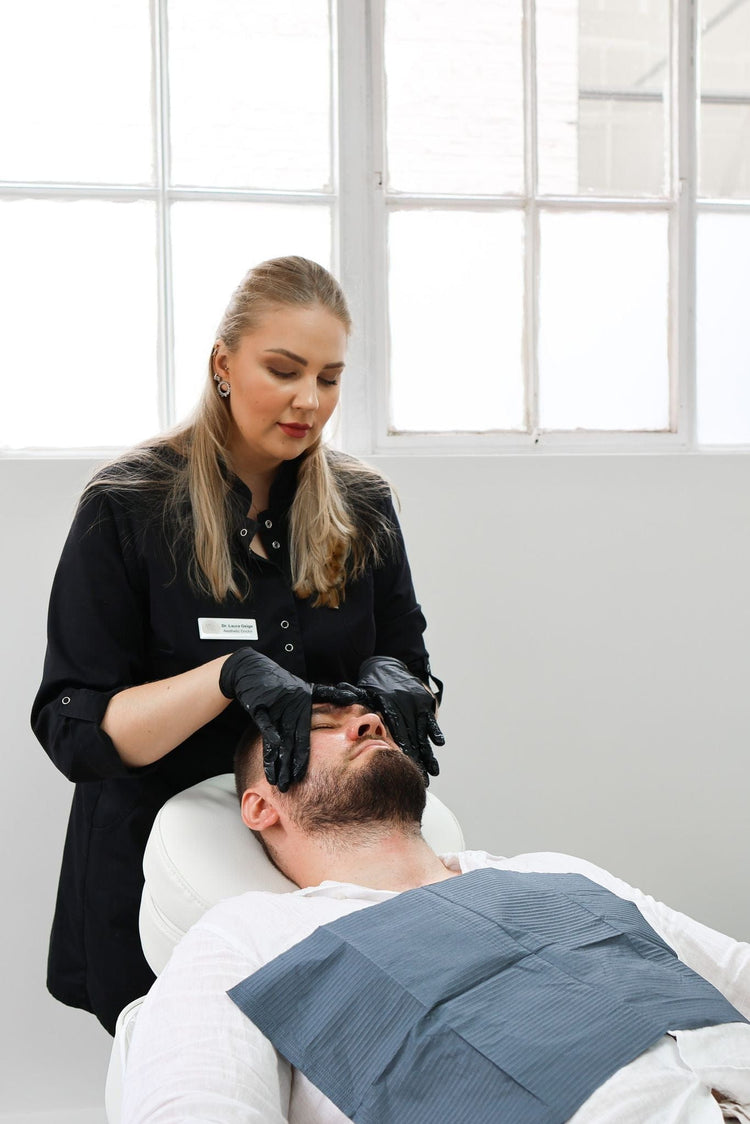Understanding Skin Texture & Tone
Understanding the nuances of skin texture and tone is fundamental for achieving healthy and radiant skin. Skin texture refers to the surface feel, encompassing factors like smoothness, roughness, or flakiness. Conversely, skin tone relates to the overall pigmentation, which can range from light to dark and display variations in undertones.
Factors Influencing Texture & Tone
Skin consultations play a crucial role in addressing issues related to skin texture and tone. A skilled esthetician or dermatologist will carefully assess various factors influencing both aspects. These include genetics, which largely determines one’s natural skin tone and texture predisposition. Environmental factors such as sun exposure, pollution, and climate can significantly impact skin health, leading to changes in texture and pigmentation. Lifestyle choices like diet, hydration, and stress levels also contribute to the overall appearance of the skin.
During a consultation, professionals will analyze the client’s skin type, identifying any specific concerns related to texture or tone. This could involve issues like uneven skin tone caused by hyperpigmentation or acne scarring, or textural problems such as dryness, flakiness, or enlarged pores. Based on their assessment, they can recommend personalized treatment plans tailored to address these concerns effectively.
Individual Variation
A comprehensive skincare approach recognizes that each individual possesses unique characteristics in terms of skin texture and tone. These variations are influenced by a combination of genetic factors, environmental exposures, and lifestyle choices. Understanding these nuances is essential for developing effective treatment strategies.
Skin consultations empower individuals to gain a deeper understanding of their skin’s specific needs. Through a thorough evaluation, professionals can identify areas requiring attention, whether it be addressing hyperpigmentation, minimizing pore size, or improving overall smoothness. Armed with this knowledge, personalized recommendations for skincare products and treatments can be made, paving the way for healthier and more radiant skin.
Common Concerns: Roughness, Unevenness, Discoloration
Skin texture and tone are fundamental aspects of skin health, contributing significantly to its overall appearance. Texture refers to the surface feel, encompassing smoothness, roughness, flakiness, or other textural variations. Tone, on the other hand, pertains to the pigmentation level, ranging from light to dark with diverse undertones.
Common concerns regarding skin texture include roughness, unevenness, and discoloration. Roughness can stem from dryness, lack of exfoliation, or underlying conditions like keratosis pilaris. Unevenness may arise from hyperpigmentation (darker patches) caused by sun damage, acne scars, or hormonal changes. Discoloration can manifest as age spots, melasma (brownish patches), or post-inflammatory hyperpigmentation (PIH) following inflammation.
Addressing these concerns often involves a multi-pronged approach tailored to individual needs. Skincare professionals recommend a combination of lifestyle modifications, topical products, and professional treatments.
Consultation Process

Understanding the intricacies of skin texture and tone is paramount for achieving healthy and vibrant skin. Skin texture, encompassing smoothness, roughness, or flakiness, while skin tone refers to the overall pigmentation level, ranging from light to dark with variations in undertones.
Initial Assessment: Medical History & Lifestyle
During an initial consultation, a medical professional will gather crucial information about your medical history and lifestyle to understand how they might be affecting your skin texture and tone.

This includes inquiries about any pre-existing medical conditions, family history of skin concerns, current medications, and allergies.

They will also ask about your skincare routine, sun exposure habits, diet, stress levels, and sleep patterns. All these factors can contribute to the health and appearance of your skin.
Skin Examination: Visual Inspection and Tools
A thorough skin examination is a fundamental part of the consultation process. This visual inspection allows practitioners to identify specific concerns related to texture and tone. Practitioners will examine the client’s entire face, paying close attention to areas like the forehead, cheeks, nose, chin, and neck.
To aid in their assessment, they may utilize tools such as magnifying lamps or dermatoscopes. These tools provide a closer look at the skin’s surface, revealing minute details that might be otherwise imperceptible to the naked eye. Magnifying lamps illuminate the skin, enhancing the visibility of texture irregularities like enlarged pores, fine lines, or acne scars.
Dermatoscopes, on the other hand, allow practitioners to penetrate deeper into the skin layers, enabling them to observe pigmentation patterns, blood vessel structure, and any underlying abnormalities.
Discussion of Concerns & Goals
During a consultation, professionals will analyze the client’s skin type, identifying any specific concerns related to texture or tone. This could involve issues like uneven skin tone caused by hyperpigmentation or acne scarring, or textural problems such as dryness, flakiness, or enlarged pores. Based on their assessment, they can recommend personalized treatment plans tailored to address these concerns effectively.
- A thorough examination of the client’s face will be conducted, focusing on areas like the forehead, cheeks, nose, chin, and neck.
- Magnifying lamps may be used to enhance the visibility of texture irregularities like enlarged pores, fine lines, or acne scars.
- Dermatoscopes can allow practitioners to observe pigmentation patterns, blood vessel structure, and any underlying abnormalities.
Treatment Options
A comprehensive skin consultation serves as a foundational step in addressing concerns related to skin texture and tone. During this process, a qualified professional will meticulously evaluate various factors influencing both aspects of skin health.
Topical Solutions: Creams, Serums, & Masks
Topical solutions play a vital role in enhancing skin texture and tone. Creams, serums, and masks offer targeted treatments to address specific concerns.
Creams provide hydration and nourishment, helping to improve smoothness and reduce roughness. Serums are concentrated formulations that deliver potent ingredients like antioxidants, vitamins, or acids, targeting issues like hyperpigmentation, fine lines, or acne scars.
Masks offer intensive treatments, providing deep hydration, exfoliation, or brightening effects depending on their composition. Clay masks absorb excess oil and impurities, while hydrating masks replenish moisture levels. Exfoliating masks remove dead skin cells, revealing smoother and brighter skin.
Ingredients Targeting Texture & Tone
A comprehensive skincare approach recognizes that each individual possesses unique characteristics in terms of skin texture and tone. These variations are influenced by a combination of genetic factors, environmental exposures, and lifestyle choices. Understanding these nuances is essential for developing effective treatment strategies.
- Hydrating Ingredients:**
- Exfoliating Ingredients:
- Pigmentation-Targeting Ingredients:**
- Retinoids:
Hyaluronic acid, glycerin, and ceramides attract and retain moisture, plumping the skin and reducing dryness.
Alpha hydroxy acids (AHAs) like glycolic acid and lactic acid, and beta hydroxy acids (BHAs) such as salicylic acid, remove dead skin cells and promote cell turnover, revealing smoother skin.
Vitamin C is a powerful antioxidant that inhibits melanin production, reducing hyperpigmentation and promoting an even skin tone. Niacinamide (vitamin B3) also helps regulate pigmentation and minimize the appearance of dark spots.
Derived from vitamin A, retinoids stimulate collagen production, improve skin texture, reduce fine lines and wrinkles, and can help address acne scarring.
In-office Procedures
In-office procedures offer a range of solutions for addressing specific skin concerns related to texture and tone. These treatments are often more potent than topical products and deliver faster results.
Chemical peels involve the application of a chemical solution to remove the outermost layers of skin, revealing smoother, brighter skin. Different types of peels target various concerns. Superficial peels address mild imperfections like dryness or uneven pigmentation, while medium-depth peels can improve the appearance of acne scars and wrinkles.
Microneedling is a procedure that utilizes tiny needles to create controlled micro-injuries in the skin. These injuries stimulate collagen production, improving skin texture, reducing pore size, and minimizing the appearance of scars.
Laser treatments offer precise targeting for various skin concerns. Laser resurfacing can improve wrinkles, pigmentation, and acne scarring by removing the outer layers of damaged skin.
Intense pulsed light (IPL) therapy utilizes broad-spectrum light to target hyperpigmentation and redness, reducing the appearance of sun spots, freckles, and rosacea.
Chemical Peels
Chemical peels are a popular in-office procedure for improving skin texture and tone. They involve applying a chemical solution to the skin, which exfoliates the outer layers and promotes cell renewal. There are different types of chemical peels, ranging from superficial to deep, each targeting specific concerns:
* **Superficial Peels:** These peels use mild acids like glycolic acid or lactic acid. They primarily address issues like dryness, uneven pigmentation, and fine wrinkles.
* **Medium-Depth Peels:** Stronger acids such as trichloroacetic acid (TCA) are used in medium-depth peels. They penetrate deeper into the skin, treating moderate acne scarring, wrinkles, and sun damage.
* **Deep Peels:** The strongest peels utilize phenol or other potent chemicals. They are reserved for severe wrinkles, deep acne scars, and other significant skin concerns.
Chemical peels can lead to noticeable improvements in skin texture and tone by promoting cell turnover, reducing pigmentation irregularities, minimizing fine lines, and improving overall smoothness. However, it’s essential to consult with a qualified dermatologist or esthetician to determine the most suitable type of peel based on your individual skin type and concerns.
Microneedling
Microneedling is a minimally invasive procedure that involves using a device with tiny needles to create controlled punctures in the skin. These micro-injuries stimulate the body’s natural healing process, prompting the production of collagen and elastin.
Collagen and elastin are essential proteins that provide structure and support to the skin, contributing to its firmness, elasticity, and overall appearance. By boosting collagen synthesis, microneedling can improve skin texture, reduce fine lines and wrinkles, minimize pores, and address acne scarring.
Microneedling can be effective for various skin concerns:
- Fine Lines and Wrinkles:**
- Acne Scarring:
- Large Pores:
- Uneven Skin Tone:
Stimulating collagen production helps plump up the skin, reducing the appearance of fine lines and wrinkles.
Microneedling can break down scar tissue and encourage new collagen growth, leading to smoother, more even skin texture.
The process tightens the appearance of pores by stimulating collagen production.
Microneedling can improve hyperpigmentation and promote a more even complexion.
It’s essential to consult with a qualified practitioner to determine if microneedling is suitable for your specific skin concerns.
Laser Therapy
Laser therapy encompasses a variety of procedures that utilize targeted light energy to address various skin concerns related to texture and tone.
One common laser treatment is laser resurfacing, which uses high-intensity laser beams to remove the outer layers of damaged skin. This process stimulates collagen production, leading to smoother, firmer skin with reduced wrinkles, pigmentation irregularities, and acne scarring.
Intense pulsed light (IPL) therapy uses broad-spectrum light energy to target specific chromophores in the skin, such as melanin or blood vessels. IPL treatments are effective in reducing hyperpigmentation, treating sun damage, minimizing redness from rosacea, and improving overall skin tone and texture.
Another type of laser therapy is fractional laser treatment, which delivers laser energy in tiny, controlled bursts to the deeper layers of the skin. This stimulates collagen production and tissue regeneration, resulting in improved skin texture, reduced wrinkles, and minimized pore size.
Lifestyle Recommendations: Skincare Routine & Habits
Lifestyle recommendations play a crucial role in achieving healthy and radiant skin. Adopting certain habits can significantly improve skin texture and tone.
One of the most important lifestyle modifications is staying hydrated by drinking plenty of water throughout the day. Water helps flush out toxins, keeps skin cells plumped, and promotes overall skin health.
A balanced diet rich in fruits, vegetables, and whole grains provides essential vitamins, minerals, and antioxidants that nourish the skin from within.
It’s also important to protect your skin from the sun’s harmful UV rays. Always wear sunscreen with an SPF of 30 or higher, even on cloudy days, and reapply every two hours, especially after swimming or sweating.
Managing stress levels is crucial for skin health. Stress can trigger hormonal imbalances that contribute to breakouts, inflammation, and premature aging. Engaging in stress-reducing activities like yoga, meditation, or spending time in nature can help maintain a healthy complexion.
Getting enough sleep is essential for cell regeneration and repair. Aim for 7-8 hours of quality sleep per night to allow your skin to recover and rejuvenate.
Smoking and excessive alcohol consumption can damage collagen and elastin, leading to wrinkles, dullness, and premature aging.
A comprehensive skincare routine tailored to your individual needs is key to addressing skin texture and tone concerns. Here’s a guide for building an effective regimen:
Morning Routine:
- Cleanse:** Start by gently cleansing your face with a mild cleanser to remove dirt, oil, and impurities.
- Serum (Optional):** Apply a serum containing ingredients like vitamin C for brightening, niacinamide for pigmentation control, or hyaluronic acid for hydration.
- Moisturize: Use a moisturizer suitable for your skin type to hydrate and protect the skin barrier.
- Sunscreen: Always apply sunscreen with at least SPF 30 to shield your skin from harmful UV rays.
Evening Routine:
- Cleanse:** Remove makeup and impurities with a cleanser. Consider using a double-cleansing method (oil cleanser followed by a water-based cleanser) if you wear makeup.
- Exfoliate (1-2 times per week):** Use a gentle exfoliating scrub or chemical exfoliant to remove dead skin cells and promote cell turnover.
- Treatment:** Apply targeted treatments such as retinol, vitamin C serum, or acne treatments based on your specific concerns.
- Moisturize: ** Apply a night cream or moisturizer to nourish and hydrate the skin while you sleep.
Remember that consistency is key when it comes to skincare. Stick to a routine for several weeks before expecting to see significant results.
Follow-Up & Maintenance
Follow-up and maintenance are crucial for achieving lasting improvements in skin texture and tone. After an initial consultation and treatment plan, continued care will help maintain the achieved results and address any new concerns that may arise. This often involves regular follow-up appointments with your esthetician or dermatologist to monitor progress, make adjustments to the treatment regimen as needed, and provide ongoing support.
Home skincare practices are equally important. It’s essential to continue using recommended products consistently and adhering to lifestyle recommendations such as sun protection, hydration, a healthy diet, and stress management. These habits contribute to long-term skin health and ensure that your initial progress is maintained over time.
Progress Monitoring and Adjustments
Follow-up and maintenance are crucial for achieving lasting improvements in skin texture and tone.
After an initial consultation and treatment plan, continued care will help maintain the achieved results and address any new concerns that may arise. This often involves regular follow-up appointments with your esthetician or dermatologist to monitor progress, make adjustments to the treatment regimen as needed, and provide ongoing support.
Home skincare practices are equally important. It’s essential to continue using recommended products consistently and adhering to lifestyle recommendations such as sun protection, hydration, a healthy diet, and stress management. These habits contribute to long-term skin health and ensure that your initial progress is maintained over time.
Long-Term Skin Health Strategies
Understanding the nuances of skin texture and tone is fundamental for achieving healthy and radiant skin. Skin texture refers to the surface feel, encompassing factors like smoothness, roughness, or flakiness. Conversely, skin tone relates to the overall pigmentation, which can range from light to dark and display variations in undertones.
A comprehensive skincare approach recognizes that each individual possesses unique characteristics in terms of skin texture and tone. These variations are influenced by a combination of genetic factors, environmental exposures, and lifestyle choices. Understanding these nuances is essential for developing effective treatment strategies.
Skin consultations empower individuals to gain a deeper understanding of their skin’s specific needs. Through a thorough evaluation, professionals can identify areas requiring attention, whether it be addressing hyperpigmentation, minimizing pore size, or improving overall smoothness. Armed with this knowledge, personalized recommendations for skincare products and treatments can be made, paving the way for healthier and more radiant skin.
Follow-up and maintenance are crucial for achieving lasting improvements in skin texture and tone.
After an initial consultation and treatment plan, continued care will help maintain the achieved results and address any new concerns that may arise. This often involves regular follow-up appointments with your esthetician or dermatologist to monitor progress, make adjustments to the treatment regimen as needed, and provide ongoing support.
Home skincare practices are equally important. It’s essential to continue using recommended products consistently and adhering to lifestyle recommendations such as sun protection, hydration, a healthy diet, and stress management. These habits contribute to long-term skin health and ensure that your initial progress is maintained over time.
Learn more about skin treatments for sensitive skin at It’s Me & You Clinic with Dr. Laura Geige
- Why CBD Gummies Are So Effective For Stress Relief And Relaxation - November 10, 2025
- What Is The Best Lip Filler - November 9, 2025
- What Are The Benefits Of Marionette Fillers? - November 8, 2025
